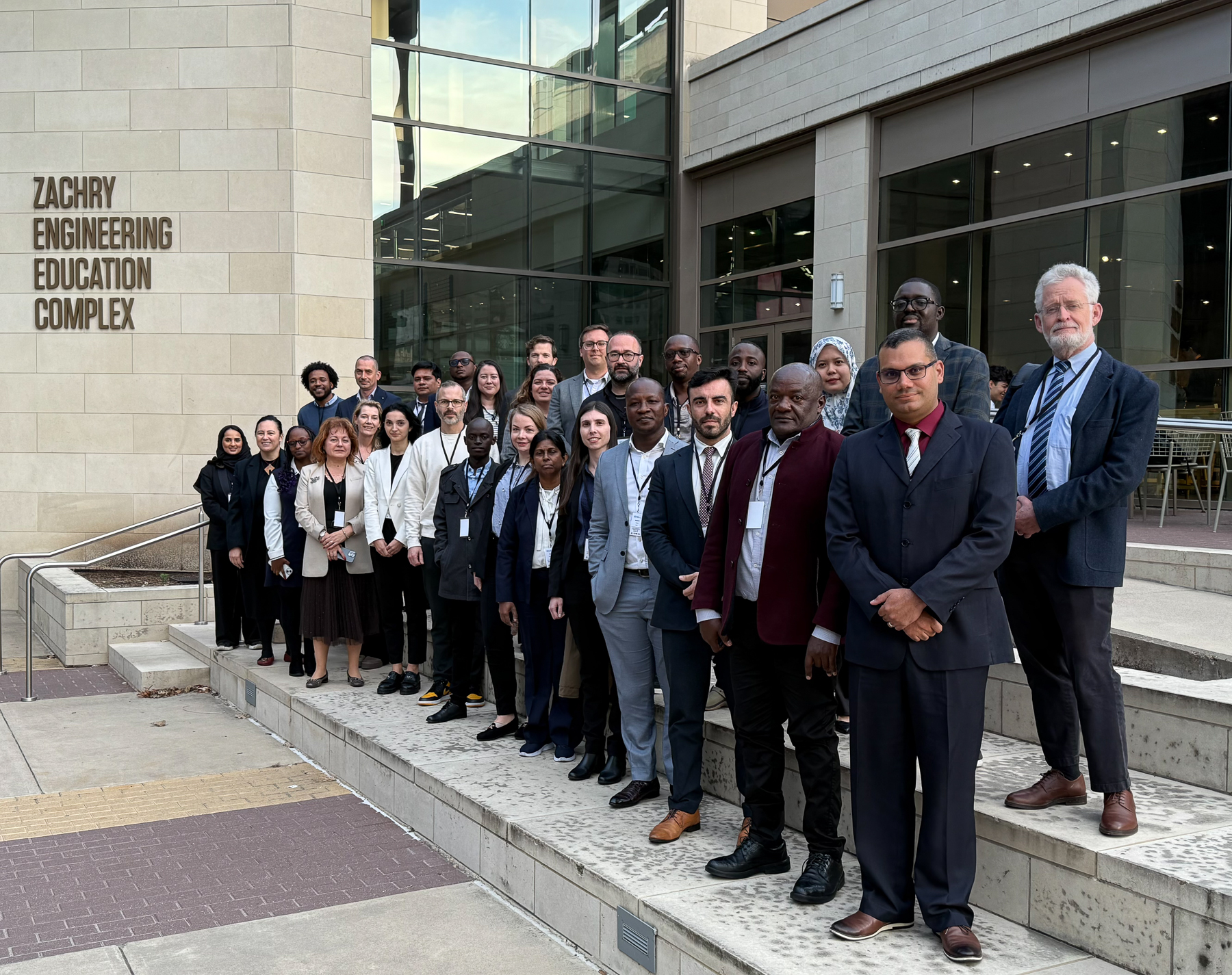
In December 2024, the International Atomic Energy Agency (IAEA) School of Nuclear Knowledge Management (NKM), held at Texas A&M University and hosted by the Center for Nuclear Security Science and Policy Initiatives (NSSPI), brought together nuclear professionals from 16 different countries to explore the development and implementation of nuclear knowledge management programs for the nuclear industry, academic and research institutions, and government agencies. This event, organized in collaboration with the IAEA and Argonne National Laboratory, provided a unique platform to transform theoretical knowledge about knowledge management into practical applications, foster international collaboration, and share the expertise of local and international subject matter experts.

According to co-organizer Marianne Nari Fisher, nuclear energy activities lead of IAEA Programs at Argonne, “The IAEA NKM School serves as a pivotal event in bringing together international professionals to enhance the practices and culture of nuclear knowledge management, benefiting the greater global nuclear community.”
Participants of the school praised the program for its real-world focus and the expertise of the instructors. One attendee shared, “This school was very useful to transform my theoretical knowledge about KM into real-life applications.” By blending theoretical frameworks with practical examples, such as knowledge management initiatives from Framatome, headquartered in France, and U.S. nuclear projects, the school enabled participants to see the relevance of these concepts in addressing real-world challenges.
The school featured expert instructors, including IAEA experts Martin Roulleaux Dugage and Gary Cairns, and Michaela Ovanes of the IAEA Nuclear Knowledge Management Section, who also served as the Scientific Secretary of the School. These instructors, many of whom have worked extensively on implementing knowledge management plans, provided in-depth insights into diverse topics such as sharing culture, succession and talent management, competency mapping, and AI tools for knowledge capture and distribution. One participant noted, “A strength to this school was having as instructors subject matter experts who have worked on implementing actual knowledge management plans as part of their career.”

Deputy Assistant Secretary of Energy for International Cooperation Aleshia Duncan opened the NKM School with welcoming remarks from the U.S. Department of Energy. Additional local case studies and perspectives were provided by Mike Wetteland of the South Texas Project Nuclear Operating Company, Texas A&M Senior Professor and Professor Emeritus K.L. Peddicord, Armando Crosland of the Department of Energy, and Loida Begley and Marlon Gant of the National Nuclear Security Administration.
The NKM School agenda included lectures, case studies, and project work. Through project work, group discussions, and practical exercises, attendees exchanged ideas and experiences. One participant remarked, “The school fostered collaboration among participants from diverse backgrounds, encouraging the exchange of ideas and experiences.”

The NKM School concluded with group project presentations and a graduation ceremony, leaving participants equipped to apply their newly acquired skills in their respective institutions. The program’s final day also featured technical tours of the TEEX Disaster City and Emergency Operations Training Center facilities, the National Electron Beam Education and Research Center, the NASA Space Food Research Facility, and the Center for Advanced, Small, and Micro Reactors (CASMR). These tours provided participants with a firsthand experience of the exceptional educational and research capabilities that Texas A&M offers.
Reflecting on the significance of the program for Texas A&M, local implementer, NSSPI Assistant Director Kelley Ragusa, remarked, “The U.S. NKM School held annually at Texas A&M is a unique opportunity to extend our Texas hospitality to the nuclear world while highlighting the leadership of Texas A&M and NSSPI in advancing human capacity building within the nuclear sector.”